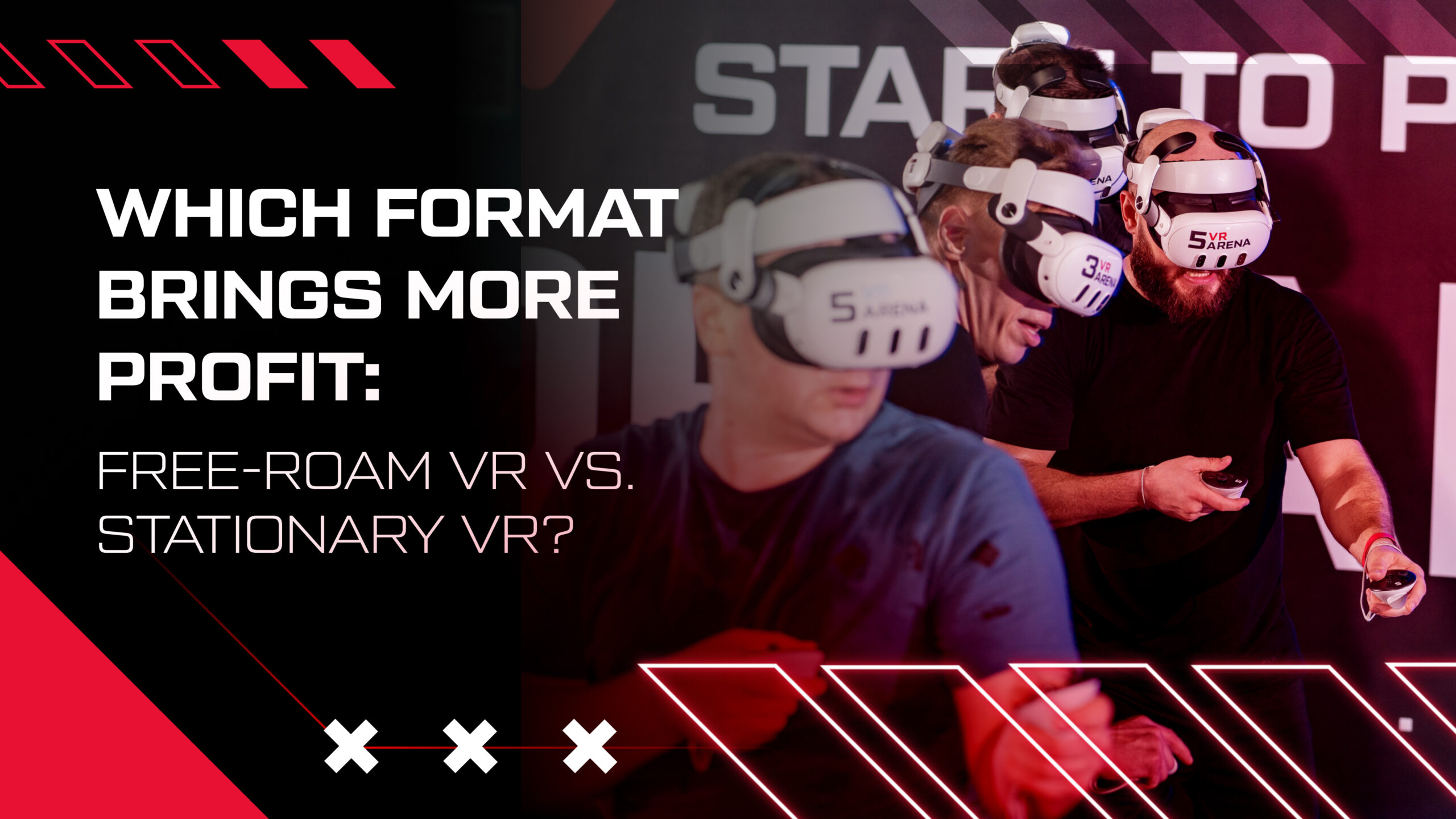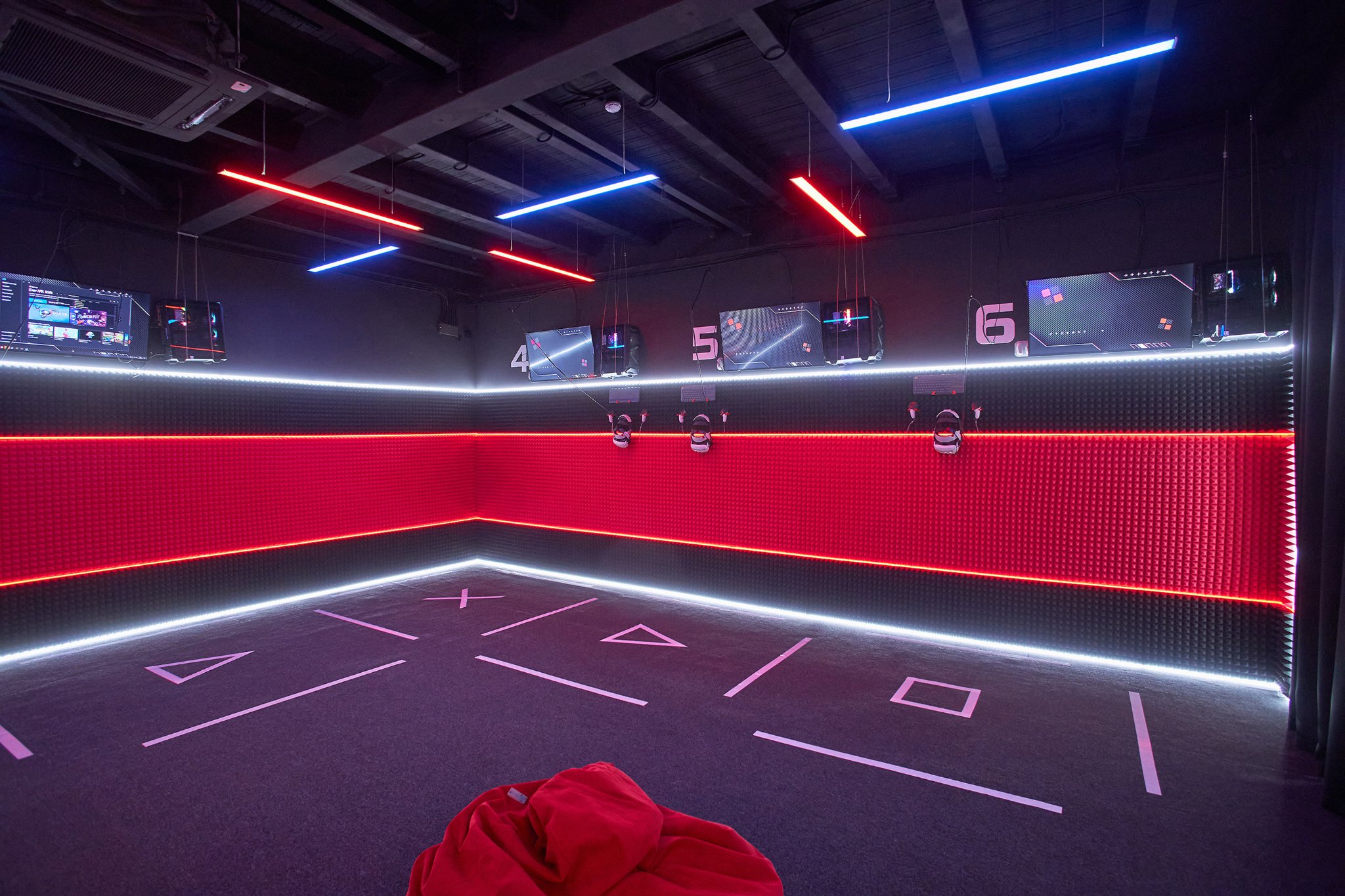Which Format Brings More Profit: Free-Roam VR vs. Stationary VR?

Virtual reality is not a single technology but an entire industry with different entertainment formats.
The main question for anyone planning to launch a VR business is: what to choose — a fully immersive VR arena or a classic stationary VR club? Let’s take a closer look and compare both approaches in terms of player experience and business efficiency
Stationary VR: A Classic Format in a Compact Zone
Stationary VR is the classic format of virtual reality, where each player is located within a small area (about 4–5 sq. m). The player puts on a headset and takes controllers, and movement in the virtual world is carried out with joysticks and buttons.
This format is easy to set up and does not require much space, which makes it perfect for small venues — for example, in shopping malls, food courts, or standalone pavilions.

Key Advantages of Stationary VR:
Wide choice of content. More than 100 games of different genres are available — from shooters and horror to quests and simulators.
Low entry cost. A great option for starting with a limited budget: you can begin with 3–4 VR zones and scale gradually as demand grows.
Minimal space requirements. No large area is needed, which speeds up payback in locations with limited space.
Suitable for small groups. Perfect for individuals, couples, or small groups of friends who want to try VR without much preparation.
Limitations: players remain within their assigned space, so the sense of free movement is missing.
VR Arena (Free Roam VR): Freedom of Movement and Full Immersion
Now imagine another level of experience — a VR arena in the Free Roam format. This is a dedicated space of 200–300 sq. m, where players move freely, just like in laser tag or paintball, but without heavy equipment. Each step in reality synchronizes with movement in the virtual world. You are not controlling an avatar — you are the avatar.

Key Advantages of Free Roam VR:
Full freedom of movement. Players can walk, run, and move naturally across the arena. This increases engagement and realism.
Immersive team play. Designed for team battles and collaboration. Players can see each other’s avatars and communicate inside the virtual world. Perfect for teambuilding and corporate events.
Scalability for events. 4–16 people can play simultaneously, making it ideal for birthdays, tournaments, or other group activities.
Higher average check. Group play and exclusivity raise the per-session revenue compared to stationary VR.
Exclusive content is developed specifically for free-roam arenas, ensuring experiences unavailable in other VR formats.
VR ARENA offers its own exclusive set of six proprietary games:

Portal Strike — a tactical team shooter, VR’s answer to Counter-Strike or Call of Duty.
Party Games — a collection of fun mini-games designed for children.
Portal Arcade — a colorful arcade shooter in cartoon style (similar to Fortnite), but in VR and with free movement.
Birthday Party — three mini-games created for birthdays and celebrations.
Portal Mafia — a tactical first-person shooter in the 1950s American setting.
Portal Zombie — a cooperative zombie apocalypse survival shooter.
And that’s not all — new games are released every year, ensuring visitors always experience something fresh and unique.
Business Potential: Investments and Returns
Before choosing a format, it’s important to understand how each works in practice.
| Parameter | VR Arena | Stationary VR |
|---|---|---|
| Space | 200–300 m² | 15–30 m² per zone |
| Players | 4–16 | 1–4 |
| Games | Exclusive team scenarios | 100+ universal games |
| Investment | High (equipment, content, location) | Medium (compact equipment, smaller space) |
| Target Audience | Large groups, corporates, eSports | Individuals, couples, small groups |
| Payback | Longer, but higher revenue potential | Faster, with lower traffic |
| Average check | High | Medium |
| Best for | Big cities, malls, tourist zones | Small premises, limited spaces |
In any case, the choice of format depends on your location, target audience, and business ambitions.
Analyzing competitors in the region and customer preferences will help you make the right decision. Many successful market players combine both approaches, gradually expanding the range of services as their business grows.

VR ARENA specialists will help you calculate the efficiency and payback of each format specifically for your business.
Leave a request on our website or contact us by phone — and receive a ready-to-use business model of a VR club or VR arena, tailored to your tasks and goals.


